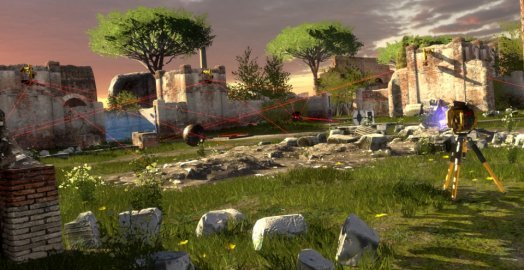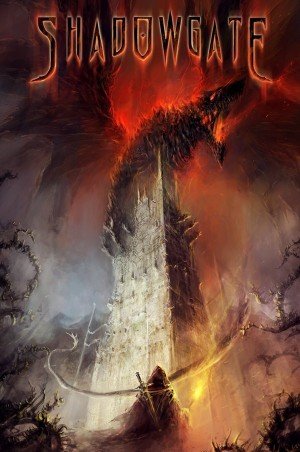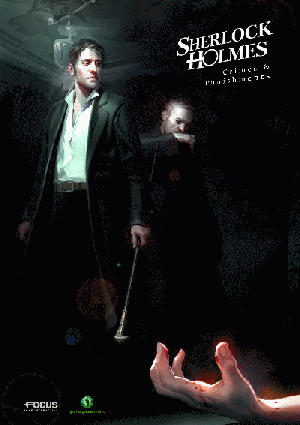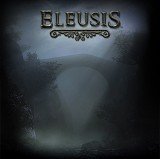Review for The Talos Principle

Croteam has worked on a single franchise for nearly 20 years – the hyperactive retro first-person shooter Serious Sam series, which is characterized by huge environments, swarms of enemies, and really, really big guns. Sam, the protagonist, is a barrel-chested, square-jawed Schwarzenegger-type given to one-liners, sunglasses, and multi-barreled rocket launchers. Typical moment-to-moment gameplay involves mowing down dozens of enemies streaming in while explosions, sprays of blood, and profanity fill the air.
So it is with some surprise that the Croatian developer’s newest game has less in common with Duke Nukem and more in common with Portal. It’s less surprising given the writing involvement of Jonas Kyratzes (The Infinite Ocean, The Sea Will Claim Everything) and Tom Jubert (The Swapper, FTL), though this game is quite unlike either designer’s previous work too. Instead, from the mysterious, omniscient voice-over to the discrete, sequential puzzle rooms, The Talos Principle is immediately reminiscent of Valve’s 2007 masterpiece. While it lacks a single compelling mechanical hook like the portal gun, The Talos Principle carves out a distinct identity for itself with its own intriguing mystery alongside some of the most complex, challenging, and satisfying puzzles ever encountered in a game like this.
The very first thing you see in The Talos Principle is your character’s skeletal, metallic arm blocking out the blinding sun. Sure enough, jump into third-person mode (which is available at any time but doesn’t add to or change the gameplay) and you’ll see that you are a robot, not unlike a less terrifying version of the Terminator’s endoskeleton. Take a few steps, and the booming voice of a god-like figure called ELOHIM fills the world. He informs you that solving these puzzles is the path to eternal life and his unending love. The world is made up of what looks like ancient Greek or Roman ruins, except for the computer terminals scattered around that contain scraps of emails, blog posts, chat logs, and an inquisitive AI named Milton. And then there’s the occasional sight glimpsed out of the corner of your eye of a wall or tree “glitching” out of existence for a split-second. What’s going on here?
The story evolves into something quite fascinating, told through a variety of methods, some conventional and some totally unique. There’s the GLaDOS-esque narrator, ELOHIM, whose disembodied voice jumps in to encourage you to keep going… and discourage you from poking around too much outside of the puzzle rooms. There’s a seemingly sentient “assistant” program you communicate with via computer terminal who pesters you with moral and ethical quandaries through dialogue trees. Quick Response codes painted on the walls throughout the world contain messages from other (previous?) inhabitants. And there are audio logs left by a pivotal character whose tale forms the emotional arc of the entire story.
Discovering the nature of this world and its backstory provides much of the joy of the game, so I will keep things vague. Suffice it to say that the game covers well-worn thematic ground – artificial intelligence, transhumanism, the nature of free will, the afterlife – but does so in an unusually immersive, thoughtful, and affecting way. The very act of puzzle-solving plays a thematically resonant role in the story, as does the inescapable human urge to poke around beyond the set boundaries and explore the greater environment. The story is also uniquely optimistic for modern science fiction, which is so often anchored around fear of technology and progress.
It’s rare for a game to implement philosophical musings in anything but the most superficial way – a Nietzsche quote here, a black and white ethical dilemma there. The Talos Principle not only presents a number of philosophical ideas and quandaries, but forces you to engage with them, pitting you against a feisty AI that pummels you with metaphysical questions, then demands that you defend your answers throughout the game using some of the oddest and most engaging dialogue trees I’ve played through in some time. It also grounds the metaphysics by framing them with scraps of deeply human endeavors – the computer terminals contain conspiracy theorist blog posts, religious texts, meandering chat room logs, and heartfelt emails between family members. The philosophical questions here are not just high-minded fiddle-faddle. They are presented as the result of thousands of years of humanity desperately trying to figure out who we are.
As great as the story is, you’ll be spending the vast majority of your time dealing with the many, many puzzles (around 120 according to the developer), alternating between scratching your head and cursing the gods of spatial reasoning and feeling like the smartest person on the planet. The goal of each area is simply to reach the endpoint and collect a Tetris-like piece, but doing so requires manipulation of force fields, pressure plates, laser beams, and eventually time itself, in increasingly devious and clever ways. Throughout the game’s hub world, you’ll find a number of locks requiring certain numbers of specific Tetris pieces. Unlocking these gives access to more puzzles, either by opening up a new portion of the hub (with portals out to the various worlds, each containing four or five puzzles), or by granting new items required for more advanced puzzles. This format gates your progress until you’ve solved enough easier puzzles to prove that you’re ready for the heavier stuff.
Much of the challenge comes from the fact that you can only carry a single object at a time. These items include jammers (which disable the puzzle element they’re aimed at, so long as they remain stationary), connectors (which redirect colored laser beams that power various aspects of the level), and fans (which, you know, blow things). If these sound mundane, they are, especially compared to a gun that shoots dimensional portals, but each item has a very specific set of behavior and interactions with the others that gets complex fast.
For example, you can use a jammer to shut off a force field, but there’s another force field behind it blocking a blue laser receiver. The second you move the jammer, the first field comes right back online. How will you get past both, while also placing a connector in just the right spot so that the blue laser beam angles around the corner? There is a small window off to the side that might let you angle the laser around the force fields, but only if you can make it to that second connecter situated up on a platform and out of reach. Cue chin-scratching. And that’s one of the straightforward obstacles. Other puzzles require thinking above and beyond the techniques the game has trained you in – angling lasers in bizarre ways, stacking crates floating in mid-air to reach new heights, and so on.
Each area has one or two secret stars that often require elements from several puzzles interacting together to reach, not to mention a great deal of patience and imagination. These are the true tests of mastery, requiring a deep understanding of the mechanical possibilities and quirks of the game. While not necessary to complete the game, the stars allow you to unlock optional secret worlds containing even more, even harder puzzles.
Obviously, the perfect amount of challenge varies from person to person, so what hit the exact sweet spot between frustration and revelation for me might prove too painful for some and breezily simple for others. The game smartly saves its most difficult puzzles for its optional content, but that doesn’t mean it’s easy. You might find yourself lulled into a false sense of security as you whip through several of the easier puzzles in a matter of minutes, only to bang your head against a real stumper for an hour before the lightbulb goes off. ELOHIM flat-out tells you to consider leaving behind a puzzle that’s too hard for a while and returning later. Since you’ll almost always have access to several puzzles at a time, it’s fairly common to move on and tackle something easier for a bit, only to come back and have the answer come right to you.
The game does include a hint system, but it’s not much help – it’s a limited, unrenewable resource that only provides a vague sentence or two of assistance, and it’s not even enabled until about 2/3 of the way through the game. The fact is, though, that even the most frustrating puzzles are fair and eminently solvable. They might be complex, but they never break the game’s internal rules.
The Talos Principle runs on Croteam’s proprietary Serious Engine, which has historically powered the fast-paced action of the Serious Sam games, though it works just fine for the slower pace of a heady puzzle game. Movement involves standard first-person WASD and mouse controls, with solid gamepad support as well. Simple and effective, I never struggled with the controls, allowing me to focus on struggling with the puzzles themselves.
This is a nice-looking game. It’s occasionally even beautiful, though it comes off as a little lifeless. That may be intentional, but there are really only three distinct types of environments covering the twenty-plus worlds. The first idyllic island strewn with lush foliage and crumbling Roman ruins is gorgeous, but then you visit several others that are copy-and-pasted variations of the same architecture. The same goes for the desert environment that makes up the middle of the game, dotted with old Egyptian temples and pyramids, and the later Medieval European architecture, with snowy castles and gothic cemeteries. None of this looks bad, but each environment outstays its welcome a bit. Every once in a while there is a stunning vista, such as a world of floating islands with huge waterfalls streaming down from the sky, or the infinitely tall tower that dominates the hub world. But a lot of them just look same-y. This does have the side benefit of making the important parts of the game easily recognizable – interactive elements are always obvious and stand out from the background decoration, which is hugely important for a game like this.
Sound is a highlight. The music is alternately soothing and mysterious, with a lot of soft, choral synths and lilting piano. It works as great background music for head-scratching, furrowed-brow puzzle-solving while also emphasizing that this world is a paradise with something strange underneath. The environmental effects are solid: chirping birds, crunching grass underfoot, babbling brooks. The rest of the sound effects also contribute helpfully. Every element has a distinctive set of sounds, so it’s always clear when a force field shuts off or a laser beam gets blocked mid-stream.
The voice acting, too, stands out. There aren’t many voiced characters, as you’ll mostly be encountering written messages left by others, but the performances you do hear are great. ELOHIM’s booming pronouncements feel huge and commanding, as they should, and the audio logs from Alexandra, a scientist studying artificial intelligence, are fantastic. In a cold world of puzzles and robots, these logs provide a warm, emotional center for the story, and the voice acting expertly conveys Alexandra’s desperation, determination, and frustration as she works to – well, I’ll leave that part for you to discover.
The greatest parts of The Talos Principle are the ones steeped in curiosity and revelation: uncovering a secret message, solving a dastardly puzzle, reaching an area you didn’t think you were supposed to be able to access. Considering just how substantial the game is, it is impressive how densely packed it is with these gratifying moments of discovery and satisfaction. I spent 17 hours with the game, completing the storyline and some of the optional content but still leaving a significant chunk untouched. There’s a lot of great puzzling here, alongside a surprisingly intriguing story that does so much more than just give an excuse for puzzles. It may not reach the sublime heights of the best of its genre, but it’s really, really close. ELOHIM beckons, child. Heed his call, go forth and feel really smart (or really dumb… and then really smart).
WHERE CAN I DOWNLOAD The Talos Principle
The Talos Principle is available at:
We get a small commission from any game you buy through these links (except Steam).Our Verdict:
Bursting at the seams with challenging puzzles and thought-provoking science fiction, The Talos Principle is a philosophically-minded first-person puzzler that’s well worth your time.





























